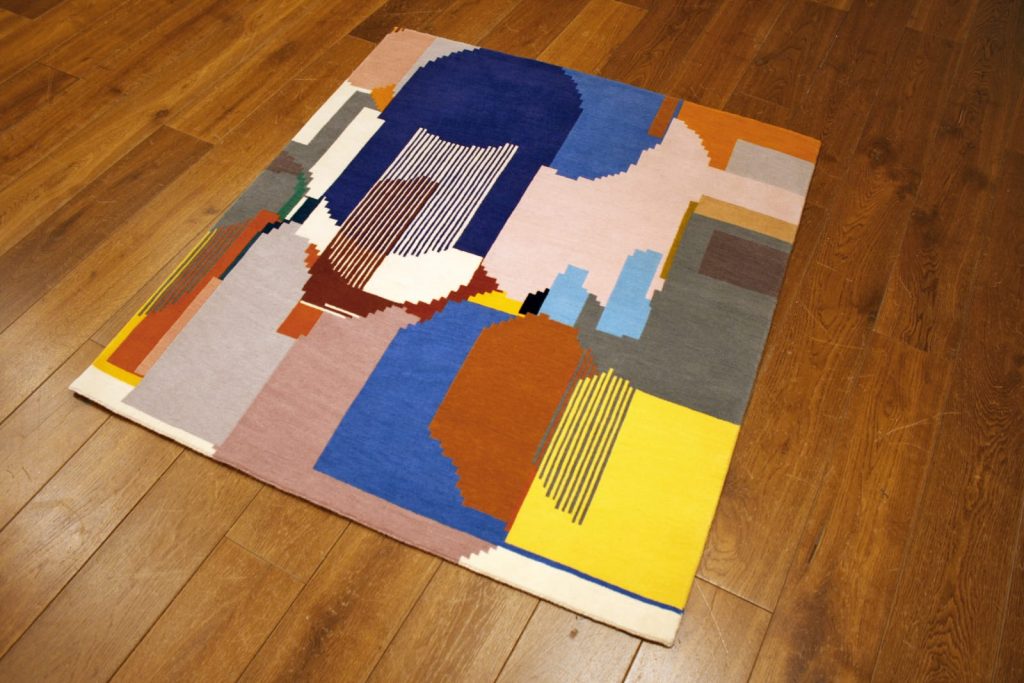
Coming soon
Coming soon
Select type
During Art Rotterdam, you will see the work of hundreds of artists from all over the world. In this series, we highlight a number of artists who will show remarkable work during the fair.
In her practice, the British-Japanese artist Lilah Fowler investigates the effects and consequences of technology on our contemporary landscape. She analyses the extent to which these are natural and man-made technologies. These human technologies consist of both analogous variants (such as Roman pottery or Navajo weaving techniques) as well as digital forms (such as large data centers). How do these change our contemporary landscape? And what role does (a common) language play in the ways in which we interpret our direct environment? In her work, Fowler delves deeper into the geopolitical layers of our globalised virtual and analog landscapes — and the ways in which these parallel worlds occasionally overlap.

Fowler’s complex and layered installations include sound installations, woven works, photography, sculpture and video art. For her projects, the artist regularly collaborates with experts from other fields, including biochemists, quantum physicists, computer programmers, mathematicians and weavers. For an exhibition on behalf of the Colchester and Ipswich Museums, she combined her own installations with works from the museum collection. For example, she made large-scale textile works whose patterns derived from a tailor-made algorithm.
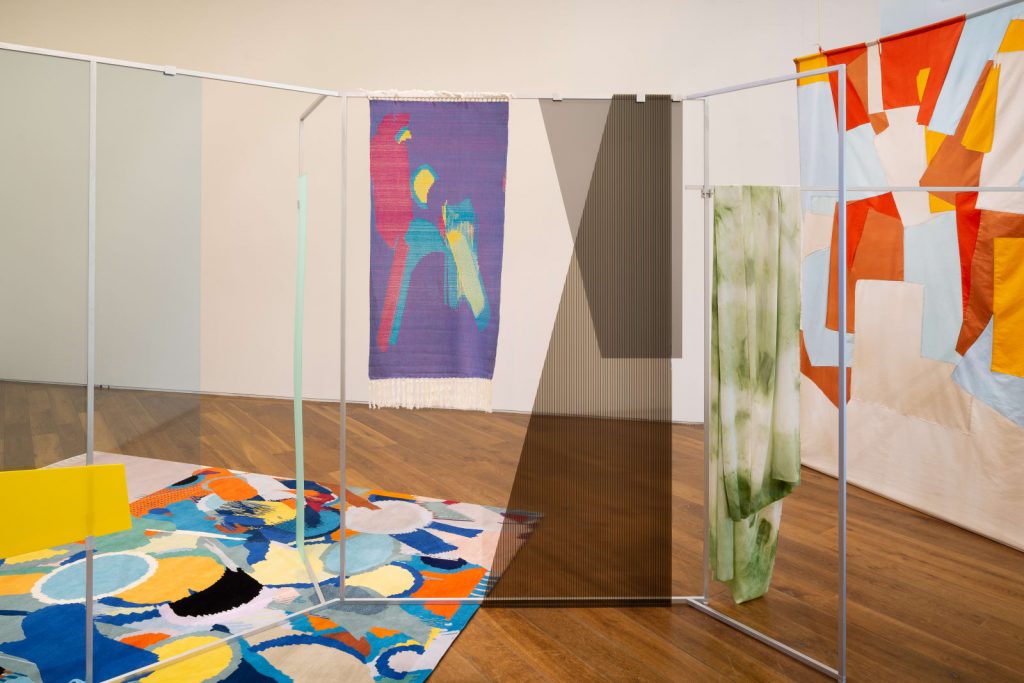
Fowler studied at the Edinburgh College of Art and obtained a master’s degree in Sculpture at the Royal College of Art in London. She has completed several residencies — including a residency at Whipps Cross Hospital — as well as research projects in places including Nevada, California, Hong Kong and the United Kingdom. She created several site-specific outdoor works and exhibited her work at the Bonner Kunstverein, Kunsthal KaDe and Museum Vasarely in Budapest, among others. Her work is currently also on display at the Whitechapel Gallery as part of the interactive side programming of the exhibition ‘A Century of the Artist’s Studio: 1920-2020’.
During Art Rotterdam, the work of Lilah Fowler will be on show in the New Art Section, presented by UN-SPACED Gallery.
During Art Rotterdam, you will see the work of hundreds of artists from all over the world. In this series, we highlight a number of artists who will show remarkable work during the fair.
The practice of Thibault Brunet explores the vague boundaries between reality and virtuality in the digital age. On a technical level, Brunet questions the functioning of photography: he seeks insight into the relationship between virtual images and reality and our own relationship with virtuality, in a society that is slowly becoming more and more digitized. In his work, he searches for new ways to capture reality and make it virtual, making use of surprising areas of research and experiments. For instance, he makes frequent use of existing virtual worlds for his photographic research.

In the spring of 2018, Brunet completed an Etant donnés residency in New York, which was made possible in part by the Aperture Foundation. In an interview about this with the French embassy in the United States, he explains more about his thinking. Brunet: “Today’s world is extremely documented. Everything is photographed, any gas station, any path; recreational drones, dashcams of cars and Gopros on the helmets of cyclists record everything. If I know how to recover and use all of this data, I can recreate the recorded world, add more in volume, make topographical interpretations. Because all of these recorded instances one after another mobilize a new world, a world numerical and immaterial, it is not a perfect replica of reality, but a misrepresented and sick replica, with holes.”
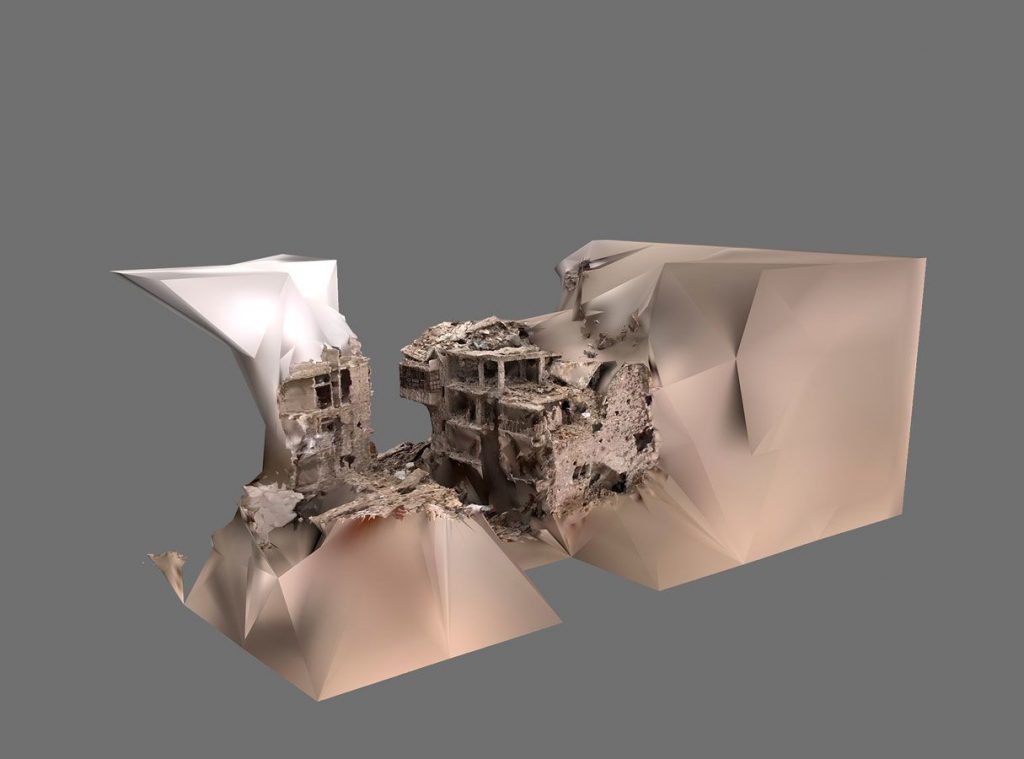
For his first series, Brunet did virtual landscape studies in video games like Grand Theft Auto and Call of Duty, and in his most recent work he delved into the popular game Minecraft. For his series “Boîte noire” (‘Black box’) he traveled in a virtual sense to war zones in Syria. He used images from Google Street View and drone images to compose 3D models. This creates a model, a simplified and incomplete representation of reality that resembles a video game. For other projects — including “Soleil noir”, which will be on display in the booth of Galerie Binome during Art Rotterdam — the artist experimented with a LIDAR (Laser Imaging Detection And Ranging) 3D scanner, which allows him to add more perspectives than you can perceive with the naked eye. As a result, he effectively changes our relationship with those same spaces.
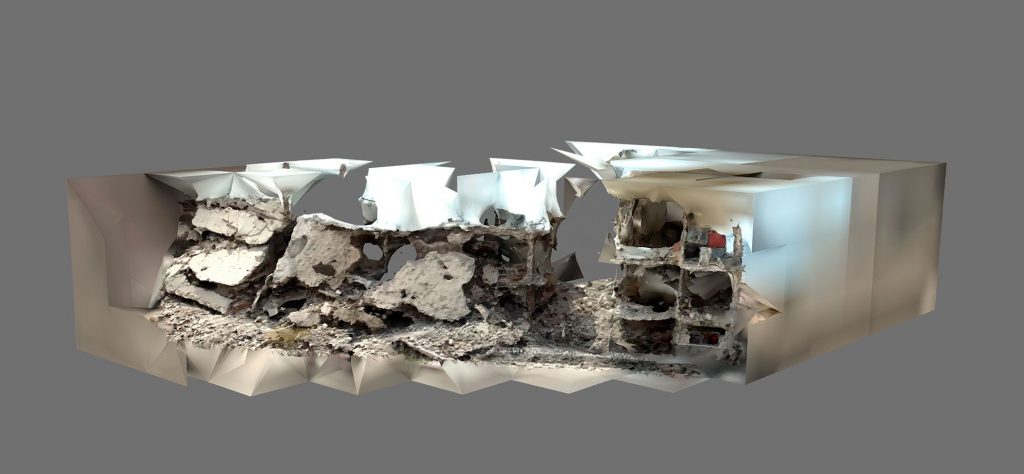
Brunet studied at the Ecole Supérieure des Beaux-Arts in Nîmes. His work has been shown at the Lyon Biennale in 2015 and at the Center Pompidou in the exhibition “Imprimer le Monde/Print the World”. The artist was a finalist of the Aperture Foundation Prize 2012 in New York, won the Photo London John Kobal Residency Award (2016) and was chosen as one of the FOAM Talents of 2013.
During Art Rotterdam, the work of Thibault Brunet will be on show in the booth of Galerie Binome, as part of Projections.
During Art Rotterdam, you will see the work of hundreds of artists from all over the world. In this series, we highlight a number of artists who will show remarkable work during the fair.
Tarona’s video artwork “Pivot” opens with a powerful English quote in purple against a black background: “When Black bodies are on the stage, Black perspectives must be reflected. This is not simply a matter of ‘artistic interpretation’; race and sex play a pivotal role in determining who holds the power to shape representation.”
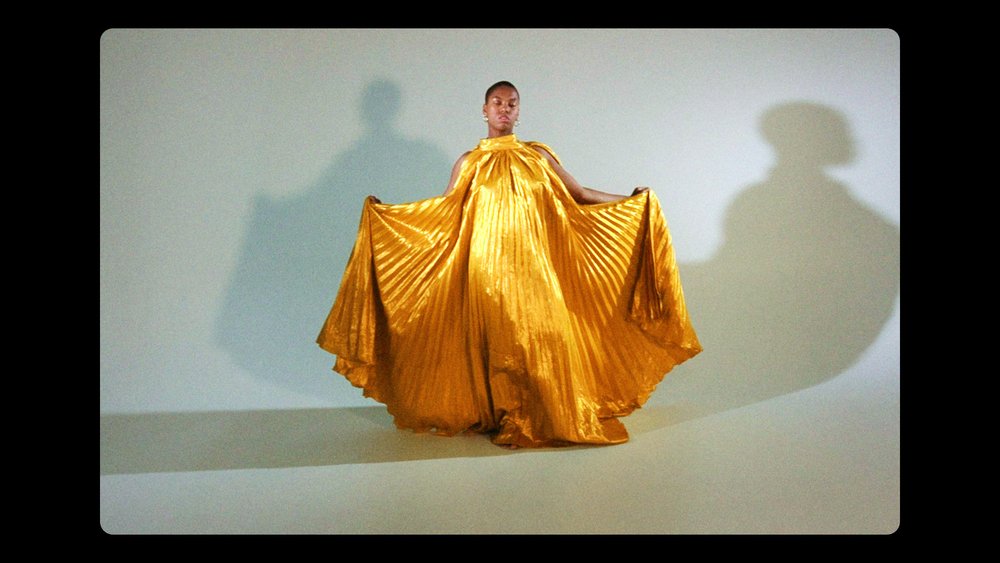
This quote was uttered by the award-winning American actress Tonya Pinkins, who previously received a prestigious Tony Award. She noted that her perspective as a Black woman was structurally ignored throughout her career, in favour of a different kind of portrayal of the Black woman: viewed through a filter of the white gaze.
The academic concept of ‘the gaze’ analyses a certain power relationship when one person is captured by another. The recorder determines how the portrayed person will be immortalised — and will be viewed by others in the future. This inequality is exacerbated when there is also another level of power inequality between these two people. In 1975, the British feminist film theorist Laura Mulvey first spoke about the ‘male gaze’, the way in which women are captured and viewed by men: often as a decorative (sex) object. Three years later, the term took on additional depth when literature professor Edward Said, founder of the field of Postcolonial Studies, published the book ‘Orientalism’. Terms such as the “oriental gaze” or the “western gaze” are useful when referring to the ways in which people from non-Western countries were (and are) represented by the West; in many cases by their (former) colonial oppressors. These people were regularly portrayed and diminished as ‘exotic’ or ‘uncivilized’, to serve as a contrast, as ‘the other’. In line with this, there is also the ‘straight gaze’ and the ‘white gaze’. This terminology is important because it signals that the mere presence of (for example) people of colour does not automatically mean that there is a correct and balanced representation.
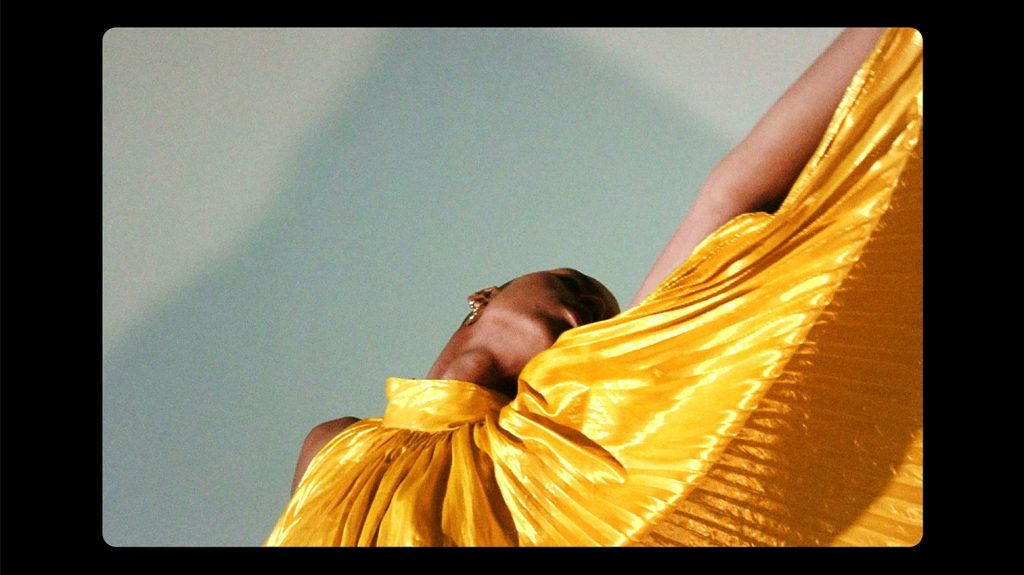
In this work, Tarona takes a closer look at Black performances in white spaces. How are Black people and people from the African diaspora (mis)represented? In the video artwork “Pivot”, we see a Black performer who resists the expectations of a white audience. In eleven minutes we see her dancing expressively in a striking golden dress that almost becomes a character in its own right. It seems like a contemporary interpretation of the famous ‘Serpentine Dance’ (1899) by the Lumière brothers, one of the very first coloured films, that was shot at an accelerated pace. However, the character in “Pivot” dances in slow motion. Tarona: “She occupies time and space, on her own terms. Since video is a time-bound medium, I chose to make this idea tangible by slowing down the visuals.”
Tarona was born in Curaçao and also uses her work as a way to explore her own identity. In her practice, the artist is inspired by the work of Johny Pitts, whose book ‘Afropean’ examines how Black and African diaspora identities are shaped in a European landscape. In her own research, Tarona often focuses specifically on Black Caribbean and South American identities in Europe, in all their versatility and complexity. In doing so, she searches for forms of representation and communality, in a landscape in which these identities are often invisible or erased.
You can view the video “Pivot” during Art Rotterdam in the Prospects exhibition of the Mondriaan Fund. For the 10th consecutive time, the Mondriaan Fund presents the work of 88 starting artists who received a financial contribution to start their career. Tarona studied at the School Of Visual Arts in New York and the Willem de Kooning Academy and her work has previously been shown in the ‘Caribbean Ties’ exhibition at the Museon in The Hague.
The video “Pivot” was made in collaboration with Chanel Vyent, Qianwei Tong, Sam van Eenbergen, Ivan Hidayat, Imane Saksou, Gaea Studio, de Makeover Factory en Captcha!.

During Rotterdam Art Week (18 to 22 May), art, design and architecture are placed on a pedestal. With about 70 events at 50 locations, you get a chance to rediscover what makes Rotterdam so unique. Like every year, the pivotal event of Rotterdam Art Week is the international art fair Art Rotterdam, supplemented by the leading design fair Object Rotterdam, young talent at The New Current, the Kunstavond XL in the Witte de Withstraat and the TEC ART festival; at the exciting event at the intersection of art, creative technology and science. In addition, there is a lot to see in the galleries, open studios and unique creative breeding grounds such as STEUR, which are only open to the public once a year. In addition to these must-sees, we highlight a few more tips below.
Charlotte Nijsten, coordinator of Rotterdam Art Week: “The best aspect of Rotterdam Art Week? The whole city is buzzing! That is the result of approximately 70 events at 50 locations, including various fairs like contemporary art fair Art Rotterdam and design fair Object Rotterdam, as well as special openings and exhibitions in museums and art institutions, pop-up exhibitions and open studios that actively enhance and enliven the art climate in the city.”
Tip: did you know that during Rotterdam Art Week, you can borrow a VanMoof e-bike (for free) between 11 am and 5 pm? Please note: It is necessary to make a reservation in advance. In addition, there is a free MINI shuttle service between the Van Nelle factory and the Merwe-Vierhaven area.
Do It Yourself Routes
Do you prefer to go out on your own but don’t know where to start? Then make use of the handy Do It Yourself Routes, which were created in collaboration with Art Index Rotterdam and her tour partner. The walking routes cover the five focus areas: the Merwe-Vierhaven area (M4H), the Van Nelle Factory area, the Kop Van Zuid, the Museum Park and the vicinity of the Central Station. View all walking routes here. Tip: click on the Google Maps button on the website to open the route (including all locations in Google Maps) on your phone. That way you can effortlessly navigate through the city.
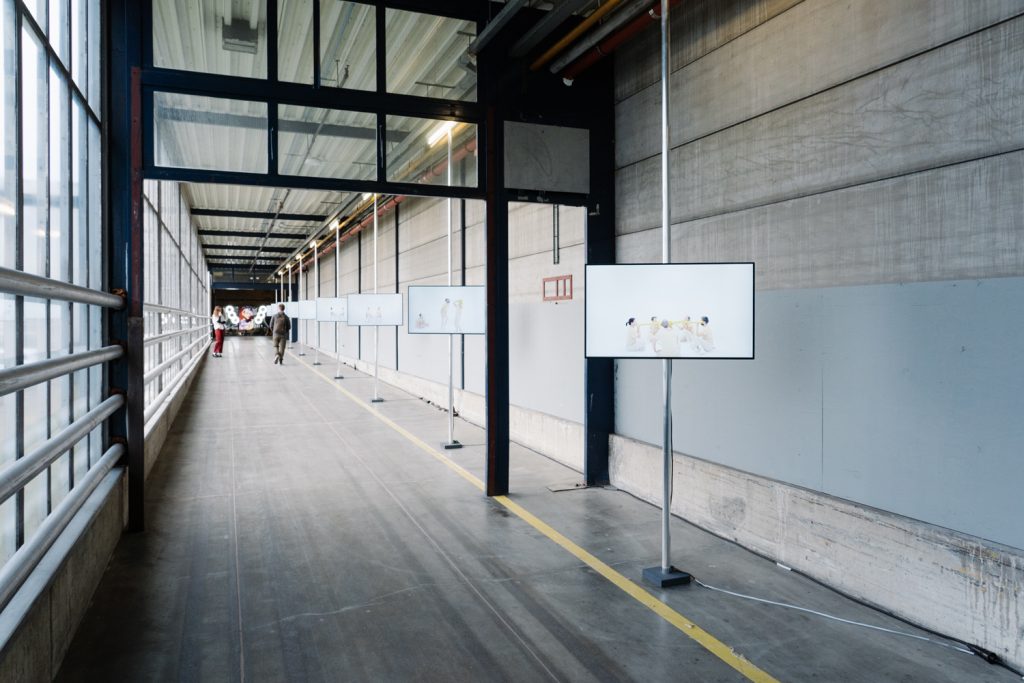
The tenth edition of Prospects, the exhibition of the Mondriaan Fund, shows work by all artists who recently received a contribution towards the start of their professional practice. New this year is the extension of Prospects to the Expedition Building, which is located directly opposite the entrance to Art Rotterdam. 88 visual artists will take part in Prospects. The exhibition is curated for the third time by experienced guest curator Johan Gustavsson, in collaboration with Gabija Seiliute.
Waèl el Allouche, Cindy Bakker, Cedric ter Bals, Marwan Bassiouni, Sophie Bates, Simon Becks, Sjef van Beers, Asgerdur Birna Bjornsdottir, Irene de Boer, Wiosna van Bon, Suzette Bousema, Wiebe Bouwsema, Anna Bravo Pérez, Leon de Bruijne, Ryan Cherewaty, Robin Alysha Clemens, Angelo Custodio, Anders Dickson, Daniel Dmyszewicz, Jurjen Galema, Andrés García Vidal, Elena Giolo, Esmay Groot Koerkamp, Sarah Rose Guitian Nederlof, Gijsje Heemskerk, Laurence Henriquez, Marta Hryniuk, Rosalynn van Hummel, Danae Io, Karlijn Janssen, Honey Jones-Hughes, Lotte Louise de Jong, Maureen Jonker, Sonia Kazovsky, Minne Kersten, Susanne Khalil Yusef, Julia Kiryanova, Bin Koh, Anne Kranenborg, Sarah Ksieska, Tarona Leonora, Nazif Lopulissa (Nasbami), Florence Marceau-Lafleur, Sjoerd Martens, Donglai Meng, Salvador Miranda, Ruben Mols, Rossella Nisio, David Noro, Evi Olde Rikkert, Tjitske Oosterholt, Ana Oosting, Anastasija Pandilovska, Natalia Papaeva, Alice Reis, Flora Reznik, Thom van Rijckevorsel, Duncan Robertson, Victor Santamarina, Joana Schneider, Simone Schuffelen, Hans Schuttenbeld, Miriam Sentler, Mirre Yayla Séur, Katerina Sidorova, Ghita Skali, Kateryna Snizhko, Machiel van Stokkum, Jonathan Straatman, Cécile Tafanelli, Michiel Ubels, Piotr Urbaniec, RJM (Robin) van der Heijden, Luciënne Venner, Lara Verheijden, Jeanine Verloop, Philip Vermeulen, Raquel Vermunt, Wessel Verrijt, Roosje Verschoor, Arian Vette, Majda Vidakovic, Marit Westerhuis, Bente Wilms, Joeri Woudstra, Iris Woutera de Jong, Bernardo Zanotta, Valerie van Zuijlen, Zindzi Zwietering.
During Art Rotterdam, you will spot the work of hundreds of artists from all over the world. In this series, we highlight a number of artists who will show remarkable work during the fair.
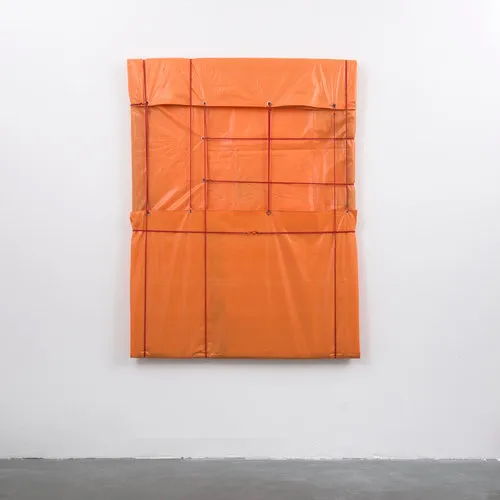
Brazilian artist Mano Penalva studied social communication and social sciences in Rio de Janeiro, with a specialisation in anthropology. In addition, he followed seven years worth of art courses at the Escola de Artes Visuais. Above all, he is fascinated by material culture: an umbrella term that is used in various fields, including anthropology, to refer to the total of tangible objects from contemporary cultures and cultures from the past. How are these products made, distributed and used?
The artist investigates this material culture in relation to behavioural changes and globalisation. He particularly prefers everyday objects that have been converted into commodities and are both local and global in character — as a result of an increasingly intensified, industrialised and internationalised production process. Penalva is interested in the ways in which objects and images are distributed around the world in an exponential fashion. This exchange can also reveal something about the socio-economic and cultural reality of a particular people or an underlying colonial history.
Penalva collects everyday objects that he finds on the street or during his many trips to major world cities, especially at popular street markets. For earlier works, the artist has used the tarpaulin that is used in these stalls. He collects and buys materials such as embroidery, appliqué patches, nets, jute bags, nylon strips, hooks, brushes and seat belts. For a recent series from 2021, Penalva used raffia packaging bags that are used for things like flour, fertilizer, mail and brown sugar.
The artist then appropriates these examples of material culture, after which he removes them from their original context in order to arrive at new, poetic meanings. Sales strategies also play a role in this. For example, for the work “Maiz”, Penalva made a corn cob out of Cheetos (chips), the size of a popular type of corn that is sold in Mexico, but is imported from the United States. He photographed that object and then printed 3,000 postcards of it, which he distributed to local souvenir sellers in Mexico City. They were allowed to keep the proceeds of the sale. The artist wants to say something about material culture, but also about the effects of globalisation.
For his practice, Penalva works in a variety of media, including painting, photography, video, sculpture and installation. His work is sometimes identified with Brazilian culture because he makes extensive use of characteristic local items, but by offering new applications, he removes the boundaries of the material. The artist is also intrigued by the idea that an object or word can have different meanings in different cultures. He searches for objects that transcend these boundaries and thus become a symbol for globalisation, after which he places them in a new context. A recurring theme is the contrast between (private) domestic life and the more ephemeral (public) life on the street, and the ways in which these influence our values and habits.
In recent years, Penalva has completed residencies in Mexico, Miami, Brussels, New York and Brazil. His work has been exhibited worldwide, including in Brussels, Mexico, Barcelona, Venice, Paris and New York. During Art Rotterdam, the work of Mano Penalva will be on show in the booth of Galerie Felix Frachon.
Vriend van Bavink | Teun Castelein
The Totem project by artist Teun Castelein is a response to the far-reaching regulation of our public domain with a multitude of rules and instructions. The project is an experimental research to find some space for the artistic within our controlled environment, for some free jazz on the beaten track.
The series of traffic signs will be placed in your street after purchase. Plates can also be ordered separately.
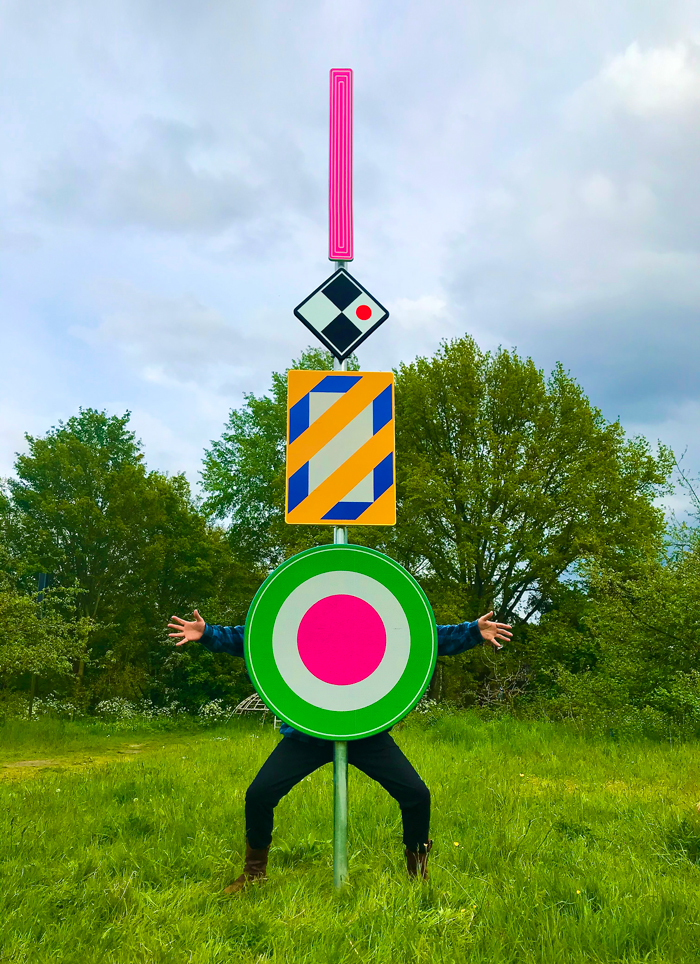
Martin van Zomeren | Paul Geelen
Mothership (…) is a large suspended ceramic sculpture that accumulates over a stretched period of time and descends from an immediate fusion between a series of contradictions and imbalances; an anecdote and the visual associations between a Snail Shell and the mutations of the hair on the Buddha’s Head and Uṣṇīṣa.
In addition to the direct impact – or by rapprochement, some closer tensions between formal, abstract and semantic associations – the ‘performative’ presence of living snails on the two bodies is characterized by a chemical reaction between the bronze glaze and the soft body of the snail.
These traces – leaving an iridescent etching effect and a permanent mark – reveal a colourful potential and transform the snail from a temporary bit player into a humble protagonist, protector and martyr at the same time.
Note: A snail is able to naturally adapt and protect itself against more severe conditions.
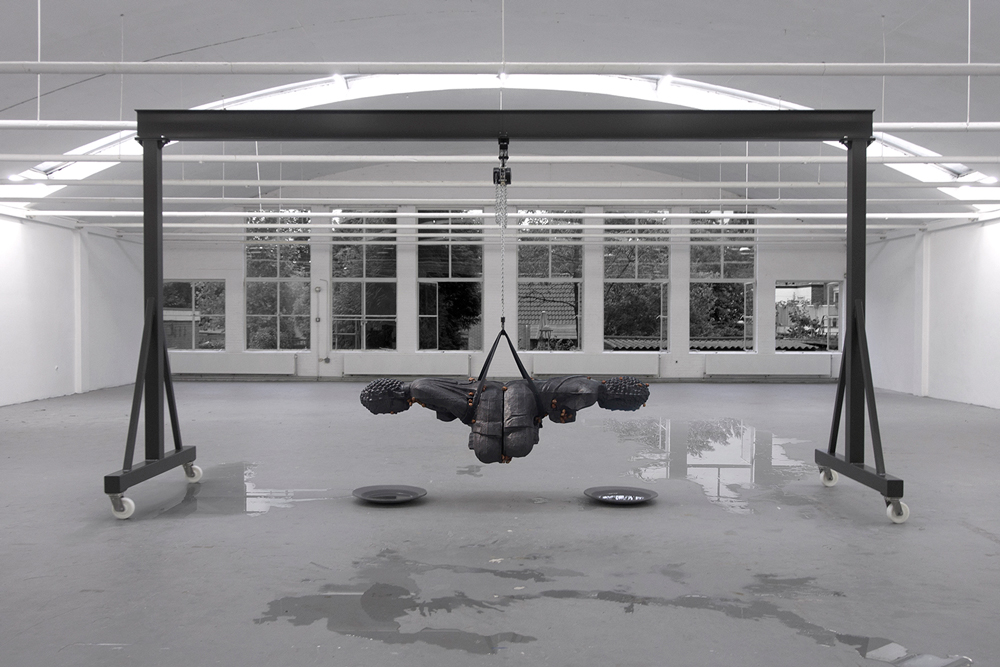
Mondriaan Fonds| Wiebe Bouwsema
For Wiebe Bouwsema, boundaries or limitations are a recurring theme: between the material and the immaterial, between interior and exterior spaces, between the actual and the virtual worlds and between man and nature. He brings these contradictions together in his work, allowing them to flow into one another, cancelling them out as well as emphasizing them. You can see it as oppressive, as dark, but also as quiet and poetic, as figures who – like Michelangelo’s Prisoners – still have to free themselves from their material.
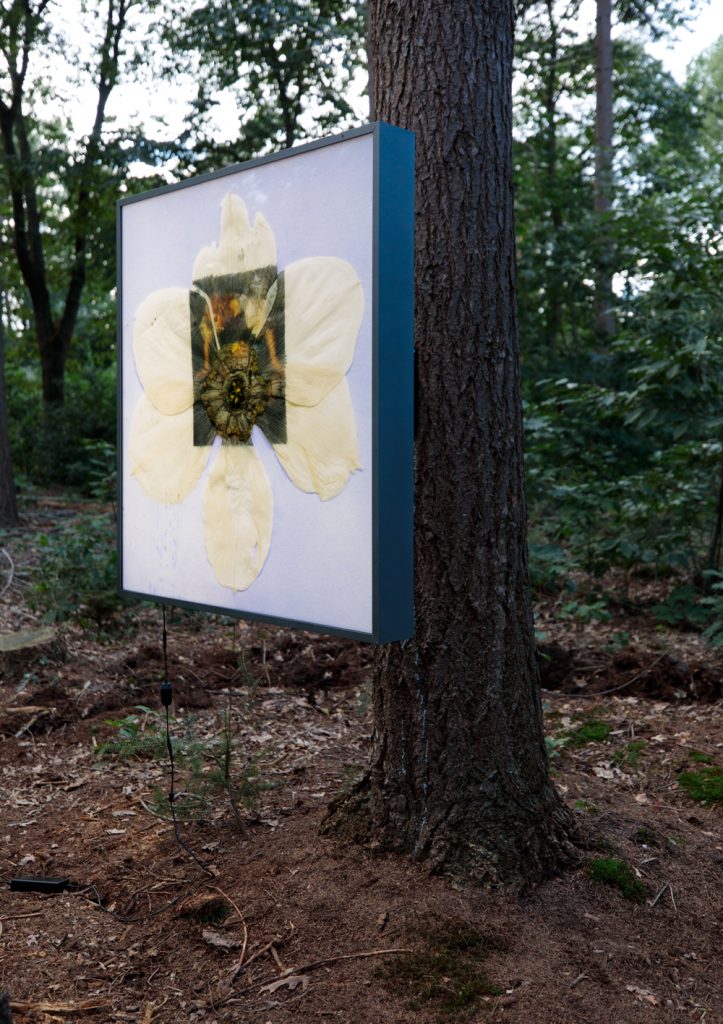
Opperclaes | Onno Poiesz
The blues
With the blues, Onno Poiesz welcomes the public. The work is meant to be festive, but is also a reference to war and pandemic, or contemporary “blues” that dominate the beginning of 2022.
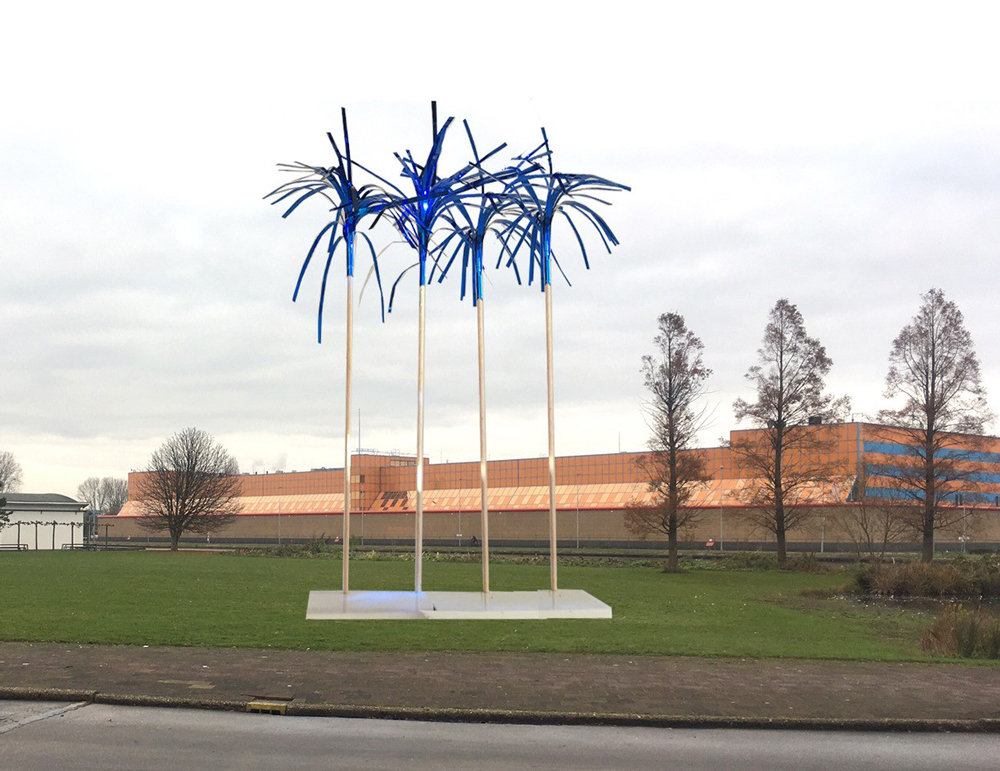
NEST | Eugenie Boon
The Pawns that Wandered in Promised Land is an installation which creates an analogy between the physical and the spiritual, fused by references of Hebrew literature, philosophy and boardgames.
“The Promised Land” in Hebrew literature expresses an image of a restored homeland that brings salvation and liberation and is understood as a goal to be reached. With this work Boon suggests that the Promised land is not only a physical place but can be understood as a state of mind- with the brain as the main battlefield, figuratively represented as a board game and the pawns as either reactive or proactive in their approach to this understanding.
With this installation Boon reflects on what can be seen and experienced versus that which cannot be seen yet still experienced. The experience is constant while the components around change through visualization.
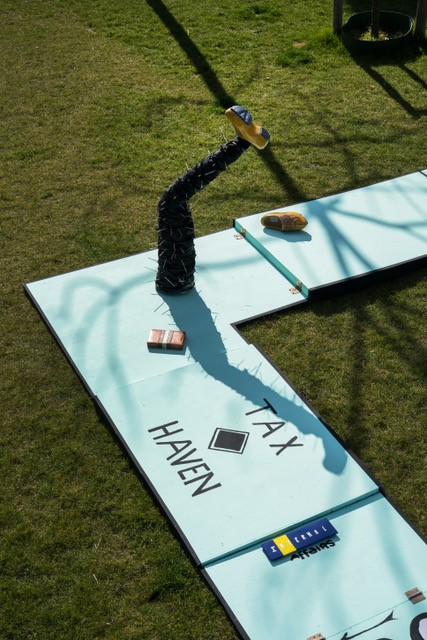
Josilda da Conceição | Bernardus Baldus
In my work I investigate the power and influence of corporate language and visual culture and its disciplining effect on society. A culture where everything can be made and controlled on the basis of figures and efficiency. I am inspired by things like efficiency, success and manufacturability, entrepreneurship, positivity, transparency, office architecture and office supplies. This leads to business objects (sculptures), performances, drawings or photos that function as illusions (simulacrum or simulation). I find it stimulating that the symbolic value – such as luxury and/or status – is more important than originality and authenticity. As an artist, I myself consider originality to be a meaningless, empty concept. Baudrillard calls this the ‘irony of the object’.
In my work I use irony as an ambiguous game with which I can seduce, surprise or make the viewer doubt. The most exciting thing about irony is that it functions through the unsaid judgment. To understand irony, context and foreknowledge are important to understand that which is not spoken. If, through irony, I ask the viewer to understand that there is a moral judgment in my work, then both the viewer and I must share that judgment in order to understand the unspoken. That does not always work.
With my ironic, critical work I want to stretch the line between what people expect from art and what it is now. The context and/or prior knowledge of the spectator are important aspects here.
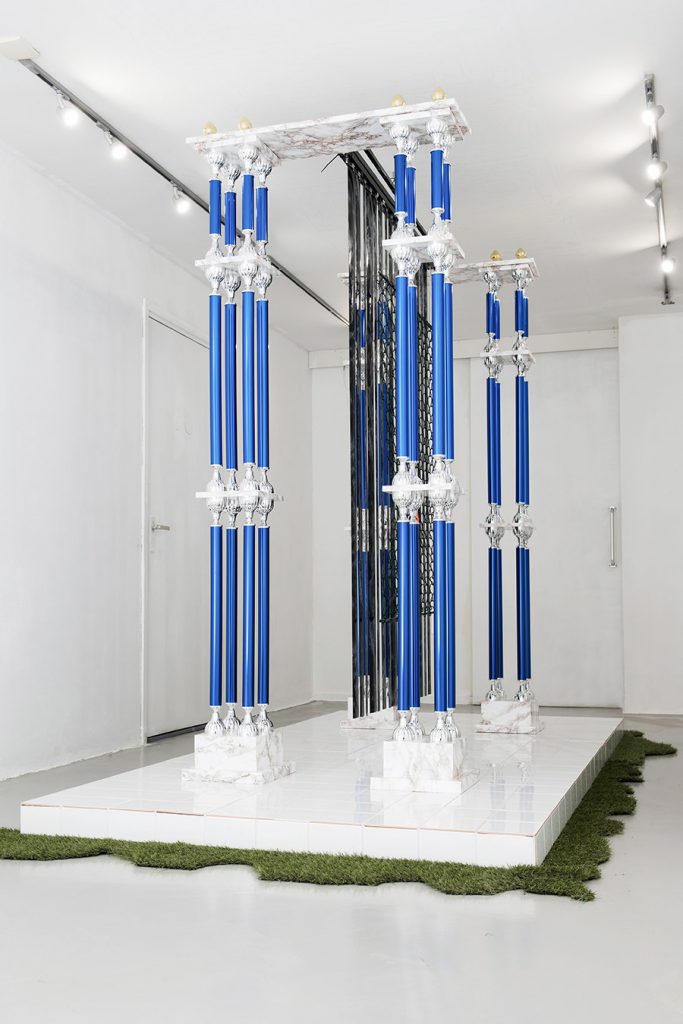
Josilda da Conceição | Marjolein Witte
Seduction is a sculpture that is a follow-up to the Evolution sculpture Witte made in 2019 for the exhibition Masterly Women at Stedelijk Museum Schiedam. By making robust, bold and strikingly colored geometric constructions, Witte investigates how we as a group or individual claim space and try to bend the world to our will. The need to be seen is at the core of our existence. We seek confirmation of our identity in family, in relationships, at work, in society and in the world. As happens similar to the animal kingdom, people have come up with all kind of ways to stand out and claim a place with different sensory means. On a micro level, here it is the artist who spreads her feathers like a bird in an attempt to seduce the viewer.

Galerie Nadja Vilenne | Charlotte Lagro
Charlotte Lagro takes found objects and relieves them of their intended purpose and function to accommodate new possibilities for exchange and desire. She strips them bare, plays with them and transforms them, and makes videos about them, often inviting others to join in the process. With sleight of hand, Lagro can make heavy objects appear almost weightless. The work “The Beginning and Ending is Always Ambiguous” centers around an umbilical cable used to supply oxygen, as well as light and communication signals, to deep sea divers. From a hundred meters below, divers climb the umbilical, hand over hand, to make their way back to the surface. In water, its air-filled tubes have just the right amount of added mass to gently sink. This artificial lifeline materializes the vulnerability of human existence. And the search for the familiar in the unfamiliar with handcrafted extensions. An optimistic relic of the human endeavor to the leave the bubble.
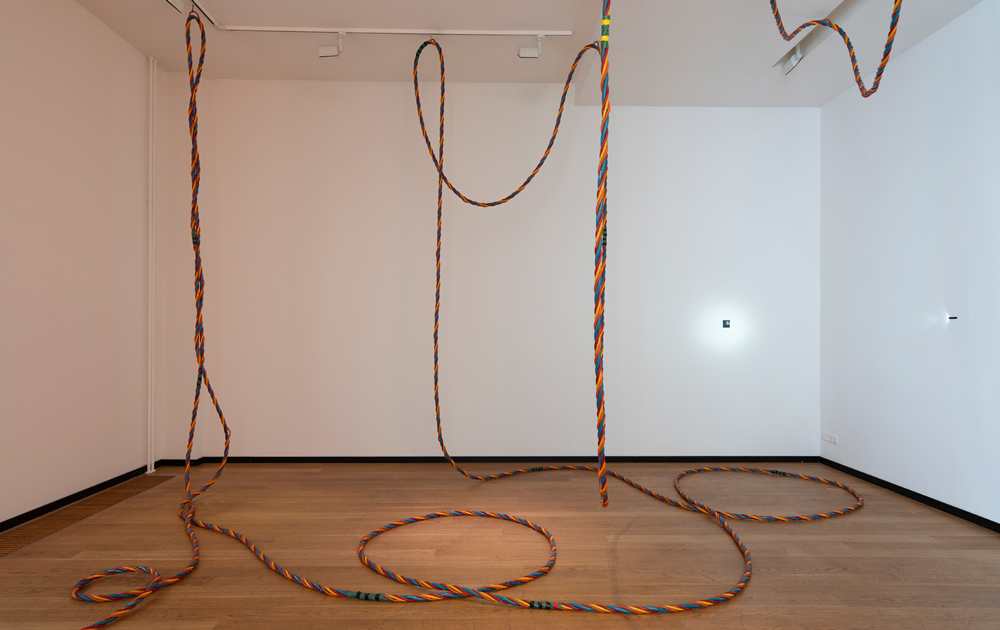
PHOEBUS Rotterdam | Esther Bruggink
I would like to escape from the watery depths, to become human and live in the golden sunshine! – this is what the little mermaid from Andersen’s fairy tale sings, in Dvorak’s opera “Rusalka”. In her longing for the prince, she sacrifices her voice and with it her ‘uniqueness’. She loses herself in vulnerability and the prince has to let her go… Full of sorrow she dissolves in the foam of the sea. The sculpture shows a structure of veins and scales, while the lungs on Rusalka’s back refer to angel wings…
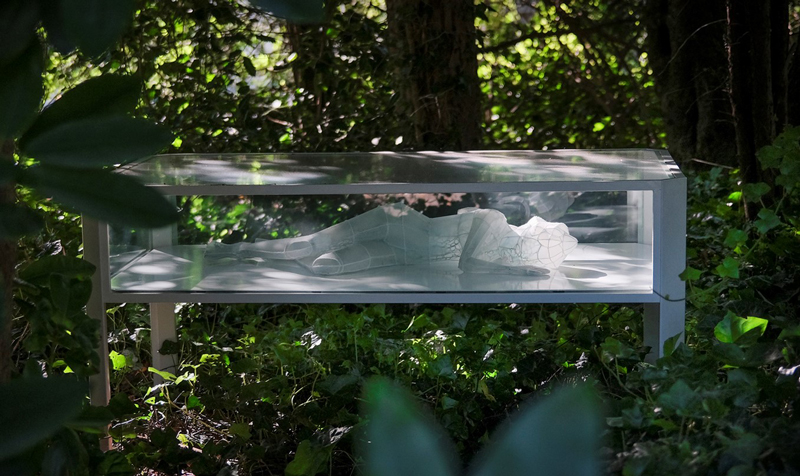
Winterlicht Schiedam | Leonard Passchier
Alarm!
UV light is essential for all living organisms on earth, but it also makes capital grow. In Rotterdam’s backyard, the Westland, you can see the purple-blue LED UV lights lighting up more and more often. Will artificial light be our future? Will we no longer be able to live without it? Will it be our only way of getting the vitamin D we need in a world where artificiality is becoming increasingly important?
Passchier’s beacon screams for attention. It’s five minutes to midnight and our climate is changing rapidly. Is this beacon warning us of rising water? Can we trust this beacon, can we navigate on it? Or will we suffer the fate of flies and mosquitoes that get too close to UV light and burn up?
In December 2022, the beacon will be part of the Winterlicht light art festival in Schiedam, which will take place in the Julianapark.

Jaap Sleper | V&B (Alex Jacobs en Ellemieke Schoenmaker)
Over millions of years, our world has been shaped by various geological processes. I would like to introduce you to ‘Continental Drifter no.3’, the promoter of this long forgotten history.
Stones are very sensitive to their environment and especially to vibrations. This sensibility has an effect on their surface.
My appearance is cuddly. This is because I consist of many layers of colored plaster that have been sanded until my skin feels polished. Where necessary I have been restored and drawing has been applied to come as close as possible to a feeling:
‘What would it feel like to be a rock; what was it like when dinosaurs walked the earth. Stones may not be able to speak, but they are telling us something and we need to listen. Because, even though we don’t know much about existence beyond humans, we can still try to imagine it….‘
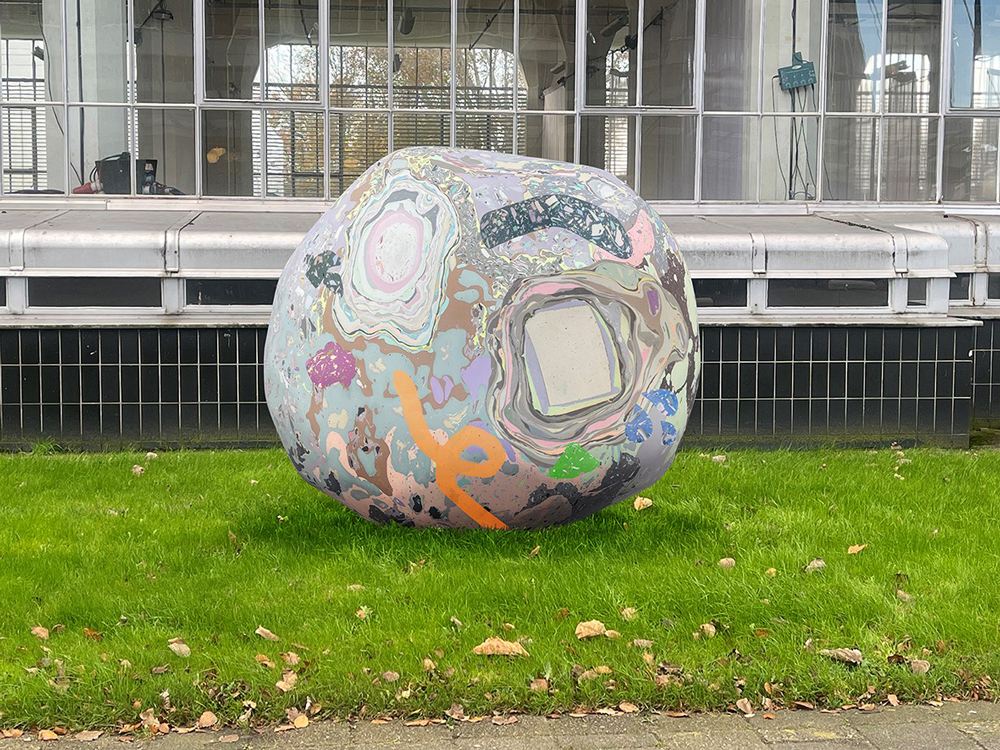
Albada Jelgersma | Jelle Koorevaar
A populist creates his own image of the world, together with his followers. Together they create their own truth within reality. There is an interdependency. Without his followers the populist is nothing. But being part of this worldview is what gives followers a sense of belonging. Populism shows this interaction between a central figure and his followers. In a very large spiderlike web a machine is hung. From a central point, the machine and the web together create a movement that spreads out. Both are dependent on each other. Without the machine the web hangs still. Without the web, the movement would just be inside the machine. Ultimately, it’s unclear who is in control.
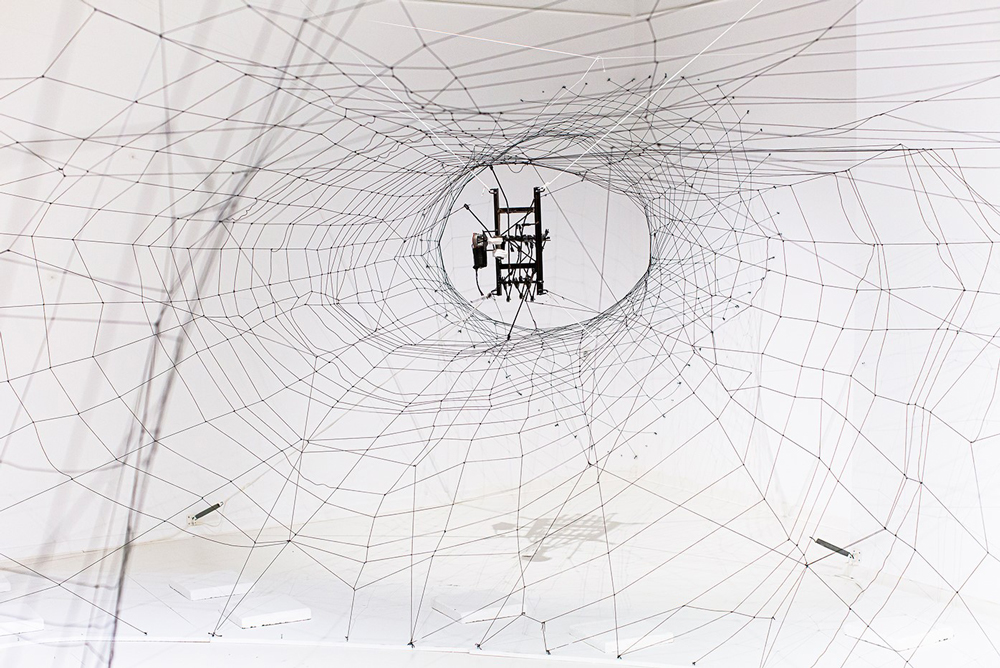
Mundriaan Fund| Roosje Verschoor
An investigation into the phenomenon of hoarding led Roosje Verschoor back to World War I and the food shortages that so prevailed among the poor in Dutch cities. The Amsterdam Potato Riot took place at that time and forms the foundation for this work. Verschoor hands out small, pointed paper bags of fries from a traditional chip cart, an action that refers to a period when potatoes were rationed. At the same time, the snack refers to the ‘spoiled fries generation’, as Verschoor and her peers are called.On the chip bags is a QR code that links to a digital chart in which we can follow how and where the riot unfolded in Amsterdam. In this Boezelaarskompas, named after the aprons worn by the women, archival material and fiction have been brought together. Verschoor has also incorporated archival materials into collages on paper made of potato peels. The final part of this investigation into the Netherlands’ best-known popular food is a series of precious bronze potatoes.
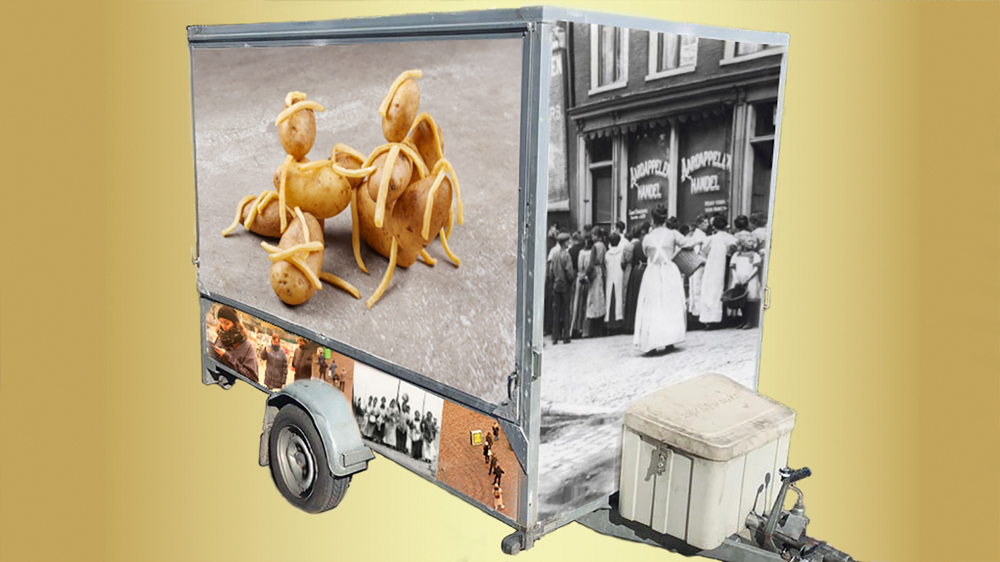
Mondriaan Fund | Jonathan Straatman
Jonathan Straatman makes architectural installations, sculptures with interiors as well as exteriors. Here, the emphasis is on how the interior space is experienced. His architectural assemblages are a kind of ‘mind map’, translations of ideas and concepts about spaces that can be walked through. In this work as well, the way in which we move through the installation plays an important role. The work is about our urge and desire to hold on to and comprehend a reality. At the heart of the experience awaits a soundscape by Twan Bracco Gartner, made especially for this sculpture.
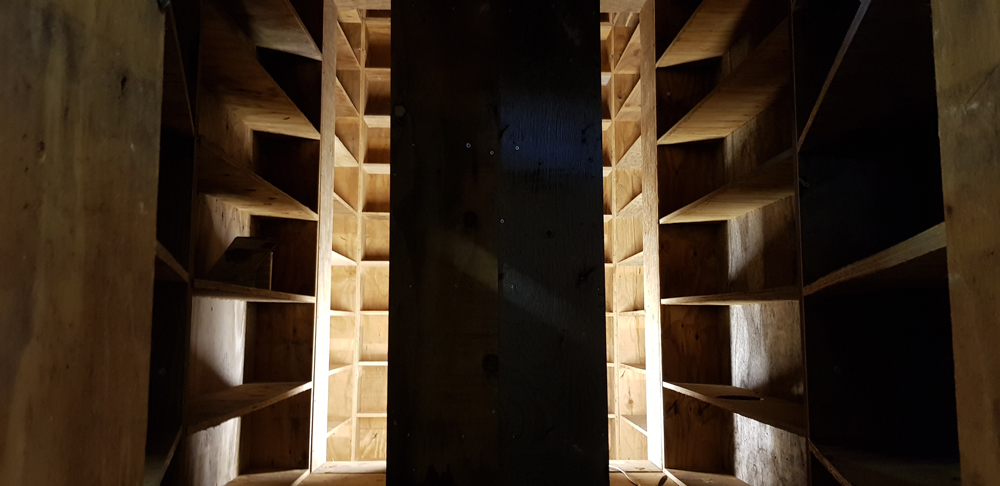
Trendbeheer | Toine Dutch Bushman Klaassen
Not For Sale is a living installation. Contemporary archeology in a laboratory of make-believe: generatio spontanea, visual chemistrymix.
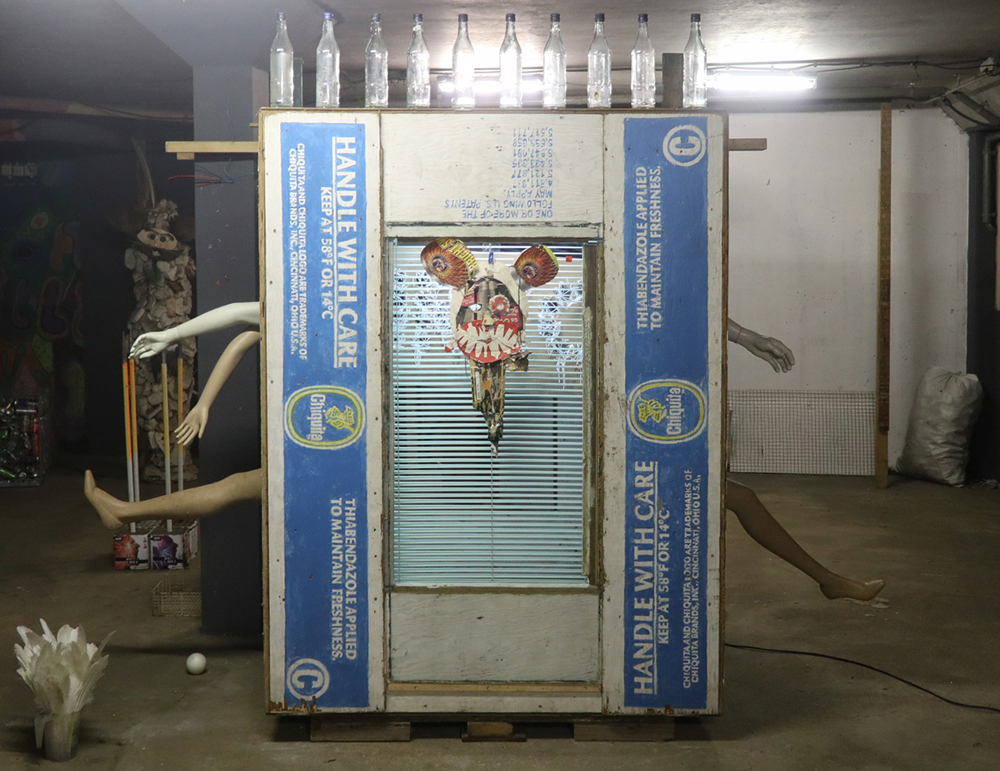
Lumen Travo Gallery | Thierry Oussou
The flag “Equilibrium Wind” is part of the on-going project that artist Thierry Oussou has developed in recent years, addressing the cotton plantations located in the district of Panouignan in Benin and the significant impact they have on the country’s economic growth.
Cotton is an important African product in the globalized arena. It is featured in international discourses and debates on privatisation, poverty alleviation, agricultural subsidies, and sustainable development. But unlike gold or oil, cotton grows from the efforts and sweat of millions of small‐scale farmers, with households and entire communities depending on it.
This flag represents all the people working in the shadows. It is a symbol for the farmers that work hard and are not seen in our society. Oussou re-connects the dots of cotton manufacturing, pointing out the sequence of actions that we, as consumers, often forget about.

Tim Wes
“This is my best body of work until date”, says Wes. As his delicate taste for cultural blending and ability to challenge the status quo of the universal perception of art, gave life to a genre bending artistry, the proverbial energy that flows through his creations reflect the disruptive-healing vision he has for the world. In his latest work he shows us the term uomo universale, today also referred to as a multidisciplinary artist, still exists. Just as Da Vinci embodied this in the 15th century, the Rotterdam based creator redefines the definition of this term by establishing unprecedented innovations in the contemporary fields. A blueprint for the new order. With the installation Trauma Triggers Triumph he uses film, music, canvas and objects to narrate his story and that of many others.
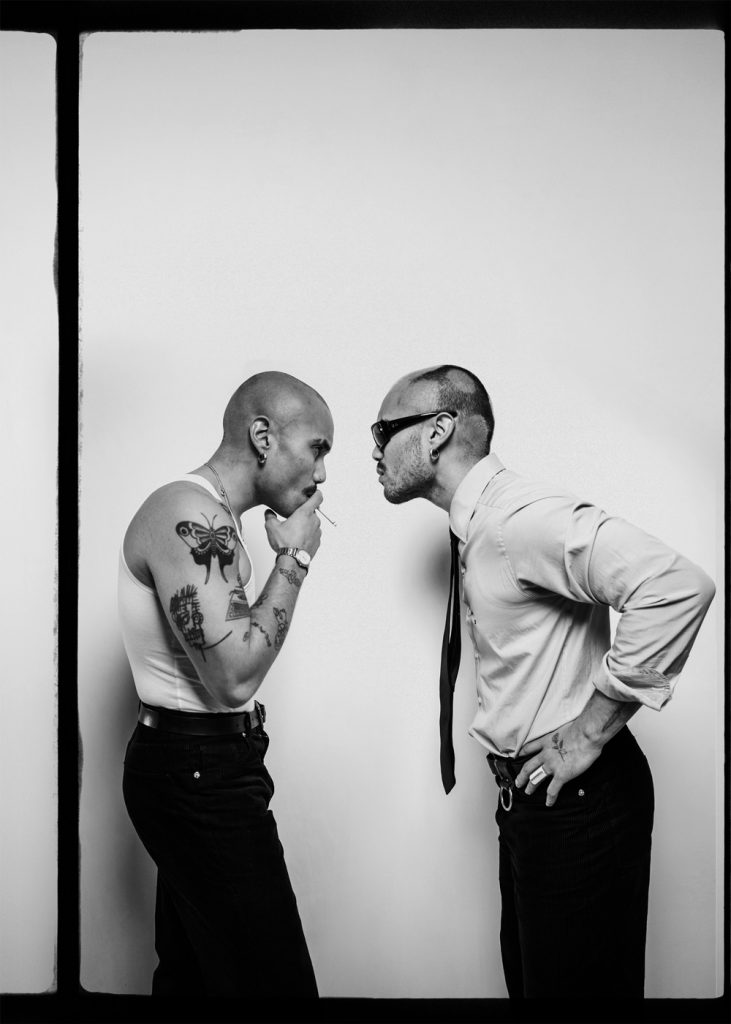
During Art Rotterdam, you will see the work of hundreds of artists from all over the world. In this series, we highlight a number of artists who will show remarkable work during the fair.
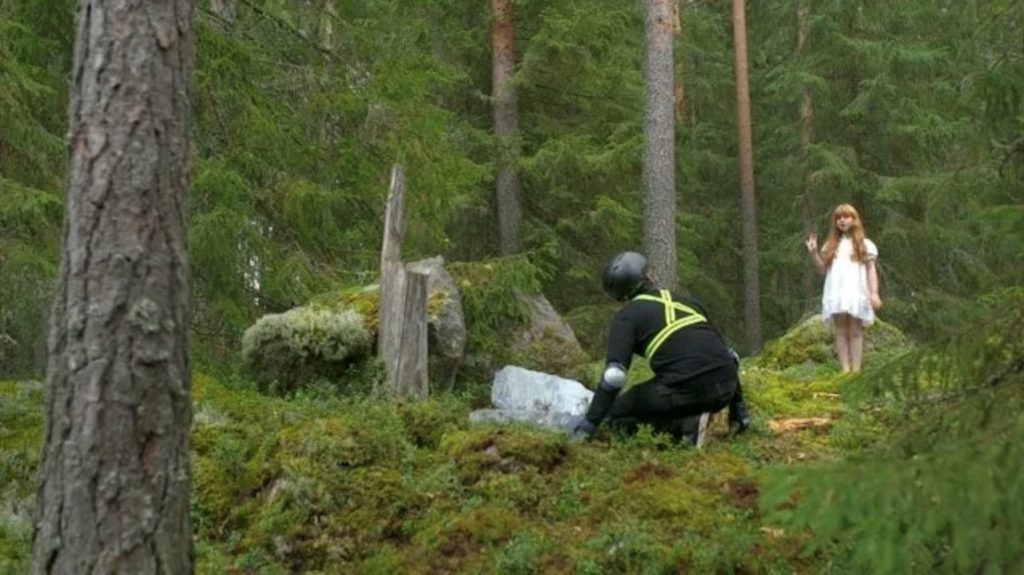
Some stories are so good that it is probably best not to check the details or facts too closely. In a way, the same can be said of the poetic work of Dutch video artist Guido van der Werve. His work is well worth the effort, but as soon as you try to explain what you are seeing, it eludes you. Five years after a serious traffic accident, he is back with his first feature film. At Art Rotterdam, Grimm Gallery will be presenting part of it: Act 10 – spice of life, death drive.
In his films, Van der Werve explores the limits of the physically possible. He has run several marathons around his house in Finland, completed a triathlon of more than 1,700 kilometres in order to bring soil from the garden of his childhood home to the final resting place of Chopin, his favourite composer, in Paris, and in a single day, ran from New York to Valhalla (NY) where Rachmaninov is buried. He also ran a marathon in under three hours – a major achievement. Until 2016, Van der Werve was able to incorporate all his interests in his films. But that spring, he was involved in a serious traffic accident in Berlin.
After a month, Van der Werve (NL, 1977) awoke from a coma and the long recovery process began. Unwittingly, he had trained himself to withstand the impact of such a blow. The artist vanished from the public eye for five years while working on his first feature film. Nummer achttien – the breath of life is about the rehabilitation process in which he had to relearn everything – from walking to talking and from playing chess to playing the piano – but above all, had to become reacquainted with himself.
The full-length feature film will premiere in theatres in early September and will consist of 12 self-contained musical video artworks. At Art Rotterdam, Grimm Gallery is showing Act 10 – spice of life / death drive in which the artist contemplates suicide, mourns the death of his father and reflects on the loss of the planet. While looking for mushrooms in the woods around his house in the Finnish countryside, Van der Werve finds two flat stones on which he engraves his own Ten Commandments. For example, every race and sexual orientation are equal, education, sports and culture must be freely accessible to everyone, people have no ownership rights over flora and fauna and happiness is overrated. He places the stones on the grave of his father, who passed away in 2013.
Van der Werve gained international fame with films in which he records his performances. In them, he addresses themes such as loneliness, uprooting and homesickness, the futility of existence and the insignificance of man in relation to nature. Nummer achttien is a highly personal project, but considering Act 10, it is also typically Van der Werve, with music performed on the spot by an orchestra and choir, gallows humour and themes such as our relationship to nature and death.
The Icebreaker
In 2007, Van der Werve made his breakthrough with Nummer acht – everything is going to be alright. This ten-minute film is about an icebreaker approaching us from the distance on an endless expanse of ice. Van der Werve walks right in front of it with a stoic look. You can hear the ice breaking and the ship’s engine roaring, but the lack of further reference points makes it difficult for the viewer to determine exactly how many meters are between Van der Werve and the bow of the icebreaker.
It is an iconic image that makes you watch with bated breath. Behind Van der Werve, the world collapses and if he does not keep moving, he is bound to collapse with it. Add to this the extremely austere camerawork, consisting of a single shot that only registers what is happening at a great distance, so that you immediately realise that Van der Werve is facing this ordeal all alone – and by extension, the rest of us.
A five-second idea
The ideas for his films often come to him out of nowhere and from a certain state of mind. So, don’t expect a conclusive argument or iron-clad logic from Van der Werve. On the contrary, his work can best be described as romantic or poetic: if you try to fully understand it, it will elude you and you’ll ruin it. In a recent interview with the Dutch daily newspaper NRC, he said, “I am not a verbal person, but I am conceptual. And by conceptual I mean apophenia, which means that I see parallels or patterns between things that aren’t there. Often a simple five-second idea underlies a work. Such an idea originates from a certain intuitive state of mind. In Finland, I once hung over the edge of a ferry and saw the ice break. It was not the best time in my life and I was in a dystopic mood. I wondered what it would be like to walk on that breaking ice. That’s how Nummer acht was born.”
Although the ideas for his films arise in a few seconds, their implementation often takes quite a lot of time. To settle the eternal question once and for all of whether his work is performance or video art, he decided from his very first film to hire a professional film crew. This is part of the reason why this film is still rock solid 20 years later.
Another constant in his films is the use of classical music. Orchestras are regularly featured in his work, which not only stems from his love of music from the Romantic era, but also because, according to Van der Werve, music has a more direct emotional effect on the audience than images. “To me, music is a way to make my work poetic. I want to create an atmosphere and I absolutely do not want to verbally explain what my work is about. It’s not rational decisions I make, but something intuitive. I consider it the artist’s job to raise things to a higher intuitive level.” Van der Werve has been composing the musical scores for his films since 2007.
Nummer twee
Van der Werve’s films are certainly not all doom and gloom because they also rely on irony and gallows humour, such as the small advertising plane trailing a banner with the text It was not enough in Nummer vier or the monotonously recited short text at the start of Nummer twee: In the morning I can’t get up, in the afternoon I am bored, in the evening I am tired and at night I can’t sleep.
Van der Werve wrote the text while studying Russian in Saint Petersburg. For a homework assignment, he had to write a personal ad. The result was not very appealing. That afternoon, he witnessed a fatal car accident, and in the evening, he attended a ballet performance. He incorporated these events into a film that takes place at a single location: the street in which he grew up.
For Dutch viewers, the contrast between the fatal accident, classical ballet and completely interchangeable street with buildings from the 1970s is immediately clear. There’s something absurdist, magically realistic, about it. A traffic fatality and a ballet, death and beauty in a place where nothing seems to ever happen, a place synonymous with predictability and boredom.
During Art Rotterdam, you will see the work of hundreds of artists from all over the world. In this series, we highlight a number of artists who will show remarkable work during the fair.
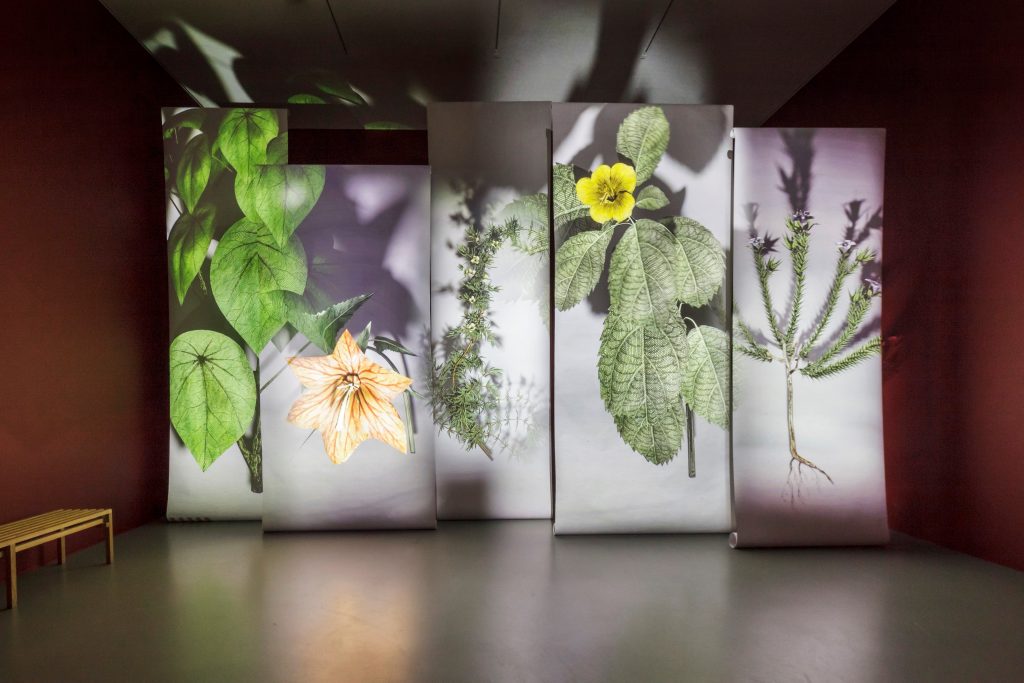
The much-loved video section Projections is being transformed this year: instead of one room with video presentations, you will now find these works spread over the fair, in dedicated video rooms in the booths of different galleries. AKINCI will show an exciting video artwork by the artist duo Margit Lukács & Persijn Broersen: “Fix the Variable, Exclude the Accidental, Eliminate the Impure, Unravel the Tangled, Discover the Unknown” (2021).
For this work, the Dutch artist duo took inspiration from the famous Swedish naturalist Carl Linnaeus, the first scientist to devise a unified system for classifying living organisms like plants and animals — essentially a new way of exercising control over nature. Linnaeus had a special bond with the Dutch Republic, where he completed his medical studies and wrote several books and articles, including his famous ‘Systema Naturae’ (1735-). He was also the personal physician to the wealthy banker and Dutch East India Company director George Clifford III, a job that Linnaeus combined with a role as supervisor of Clifford’s botanical garden and zoo. During his many travels, Clifford had collected hundreds of plant species, as well as tigers, monkeys, various bird species and Indian deer. Linnaeus was particularly fascinated by the foreign plants in the collection and classified them in his ‘Hortus Cliffortianus’ (1937). Of course, if you look at Linnaeus’s classification system with contemporary eyes, that system isn’t that objective at all, for instance when you read how he described human “varieties” — he didn’t use the word race. But also if you look at his representations of tropical plant species, which he did not describe in a neutral fashion, but rather as an idealised version. And this is remarkable because Linnaeus regarded his rigid system as the pinnacle of objectivity.
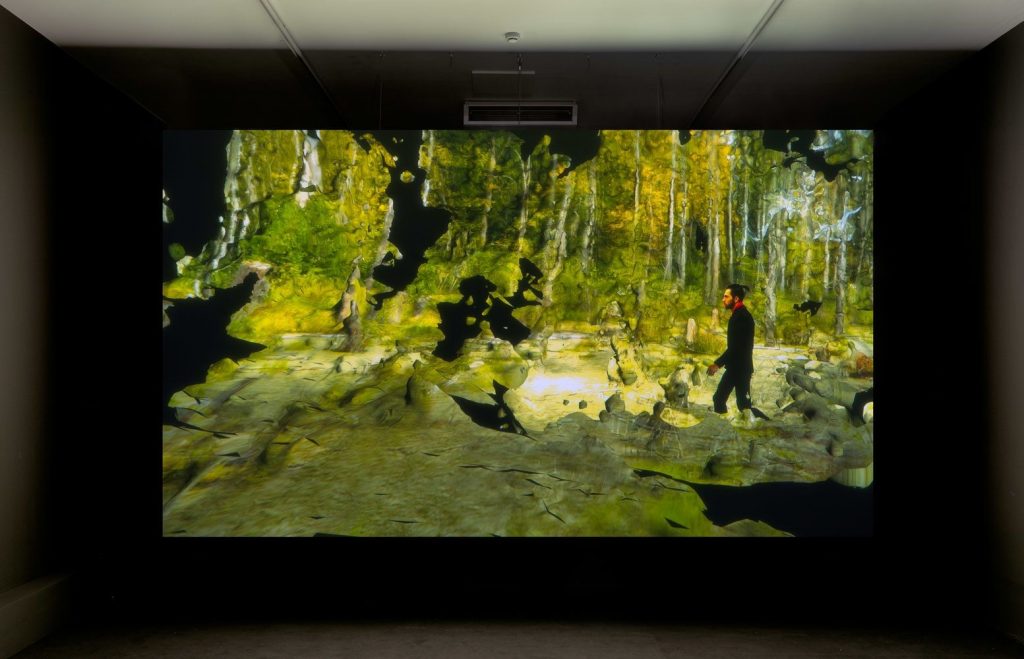
In the video work by Lukács & Broersen, we see a series of hyper-realistic, virtual, dancing plants, inspired by Linnaeus’ rendering of George Clifford III’s tropical plant collection. Yet the animated plants in this video artwork do not appear 100% real. As a viewer, you experience a certain alienation that might be related to the uncanny valley effect — that uneasy feeling we get when a robot looks too much like a human being, but also not quite enough. In this work, the natural and the virtual enter into a relationship that the viewer experiences as unnatural. The flowers and plants move gently at first, as if they are moved by a gentle breeze. After a while, the movements become increasingly fierce and menacing, as if the plants are trying to escape from their imposed straitjacket. The choreography isn’t coincidental and was programmed based on the movements of rebellious crowds and forces of nature. These movements contrast with the static representations that Linnaeus immortalised in his ‘Hortus Cliffortianus’. The compelling piano music of concert pianist Daria van den Bercken is abruptly followed by protest music by the American revolutionary and composer Frederic Rzewski, who passed away last year. The chosen compositions border on the atonal, which we tend to experience as unnatural. Moreover, the music is not synchronised with the video, so every time you watch the work, you will see a different combination of visuals and sound.
In their work, Margit Lukács & Persijn Broersen play with different fields of tension. On the one hand, they are concerned with the ways in which fiction dictates reality, and vice versa. On the other hand, they look at the relationship between people and their immediate environment: nature, but also society at large. How is this relationship influenced by the large amount of media that we consume on a daily basis, consciously and unconsciously? The artists want to show how reality, fiction and (mass) media are intrinsically intertwined. They emphasise this by combining filmed or photographed footage with digital animation and images from the media. Their works often function as parallel worlds, that tend to reflect our society and visual culture. Lukács & Broersen are particularly interested in the ways in which people experience and construct nature. They refer to subjects like endless reproduction and our focus on the ornamental and the superficial. Because although our screens are borderless and timeless, they also offer a flattened reality. And we are spending more and more time in our virtual worlds, which in turn affects the way we relate to nature.
Our disturbed relationship with nature also emerges in an interesting way in their earlier video artwork “Forest on Location” (2018). For this work, the artists traveled to the 11,800-year-old Białowieża Forest on the border of Poland and Belarus. The forest is classified as UNESCO World Heritage and it has been a source of inspiration for myths, legends and fairy tales for centuries now. However, due to large-scale logging, the forest is becoming significantly smaller. Lukács & Broersen shot footage on location and then created a kind of digital “backup”. They subsequently transformed the 2D photo images into a 3D experience that almost resembles a computer game. They added a performance by the Iranian opera singer Shahram Yazdani, who tells of a wise tree addressing a lost boy. The video work offers a stark contrast to our real relationship with nature, in which humans claim all of the power, in which nature is primarily seen as a commodity. As the film progresses, the magical and mysterious forest gradually turns into a more deconstructed and fragmented digital representation.
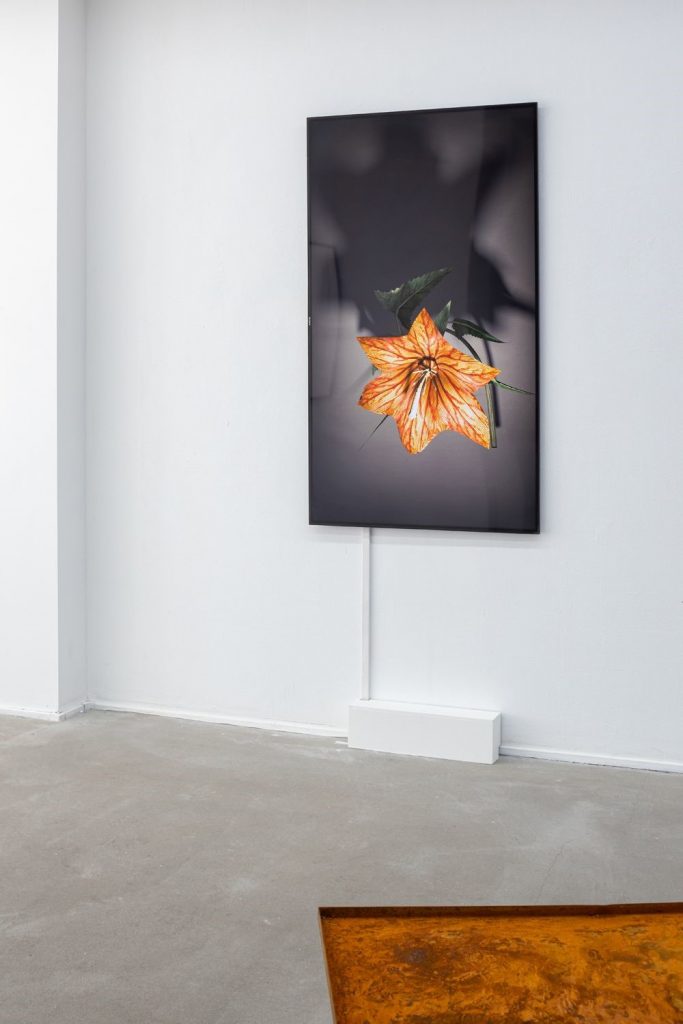
Lukács & Broersen have been collaborating since 2001. They both studied graphic design at the Gerrit Rietveld Academy, followed by a study in Fine Arts and Design at the Sandberg Institute. The duo then completed residencies at the Chinese European Art Center, The International Artists Studio Program in Stockholm, the Rijksakademie van Beeldende Kunsten in Amsterdam and Künstlerhaus Bethanien in Berlin, among others. Their work has been shown in various museums, (film) festivals and television broadcasts all over the world, from Centre Pompidou, Foam, IFFR, the New York Film Festival and Lowlands to the World Expo Shanghai, Rencontres d’Arles and the Sydney Biennale. Lukács & Broersen created a site-specific work for the elevator of the Stedelijk Museum as well as a work for the North-South subway line in Amsterdam. In addition to films, animations and videos, the artist duo also makes photographs, screen prints and murals.
During Art Rotterdam, the work of Margit Lukács & Persijn Broersen will be on show in the Projections presentation in the AKINCI booth.
The video artwork ‘Fix the Variable, Exclude the Accidental, Eliminate the Impure, Unravel the Tangled, Discover the Unknown’ was commissioned by the Centraal Museum and is also part of the museum’s collection. The work will also be on show in the exhibition ‘The Botanical Revolution’ until 1 May. The title of the work refers to a quote by Johann Wolfgang von Goethe and is part of his search of the essence of the pure phenomenon.
During Art Rotterdam, you will see the work of hundreds of artists from all over the world. In this series, we highlight a number of artists who will show remarkable work during the fair.
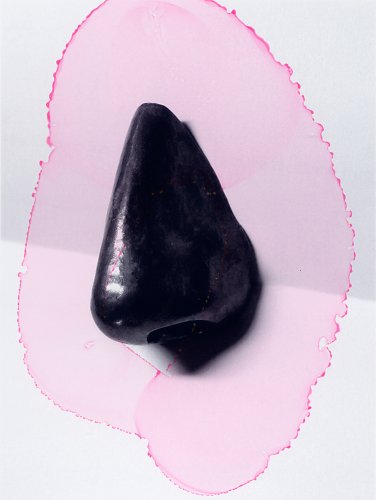
Dutch artist and photographer Viviane Sassen was born in Amsterdam, but she spent three years in Kenya before she was six years old. It explains why Africa has long been a recurring element in her work, in particular the work she created before 2018. Sassen did not express herself in Western stereotypes about Africa, rather she emphasised contemporary elements from African culture. She usually works with sharp silhouettes, lots of shadows and saturated colours and her characters almost always remain anonymous. In the past few years, Sassen created two new series: “Venus & Mercury” (2019-2020) and “Paint Studies” (2021).
For “Venus & Mercury”, the artist found a surprising source of inspiration: the French court in Versailles, commissioned by the famous palace that has assumed near-mythical proportions in our collective imagination. Every year since 2008, Versailles has invited a contemporary artist to comment on the palace and the surrounding gardens. These artists include Anish Kapoor, Olafur Eliasson, Guiseppe Penone and Jeff Koons. In 2019, the honour was awarded to five photographers, including Nan Goldin and Martin Parr. Sassen was one of these five photographers and she was given access to Versailles for six months. She made use of the palace’s archives, as well as the architecture and artifacts of the palace. Sassen expressed a particular interest in the invisible stories, the scandals and the excess of sex, symbolised by Venus: the goddess of love. The result is a series of works in which old and new elements are combined. The artist collaborated with a group of young women who grew up in the Versailles area. They are depicted in contemporary clothing, while they seem to (literally) disappear in the opulence of the palace. Occasionally, the works represent personal details, including letters from Marie-Antoinette and references to prosthetic noses — since syphilis, a widespread disease, caused severe deformities of aristocratic noses. The name ‘Mercury’ in the title of the series therefore refers both to the Roman god Mercury and the poisonous substance mercury that was used to treat syphilis.
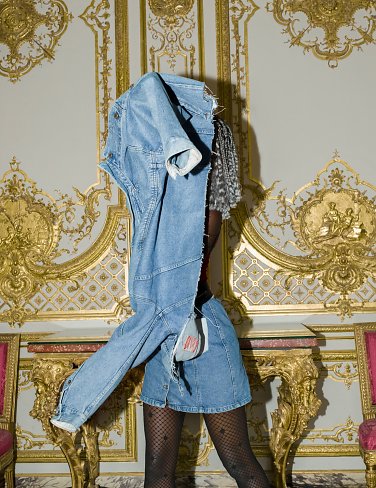
Sassen’s visual language recently underwent a transformation when she worked on her latest series “Paint Studies”. In it, she explored new combinations of ink, paint and collage. Because her work is still characterised by sculptural representations of bodies, her pieces are still quite recognisable. But the bodies are more surreal, more fragmented and the end result more abstract, due to the addition of intense and unnatural areas of colour and concealing brushstrokes. Her characters remain anonymous.
Sassen initially studied fashion design, followed by a degree in photography at the HKU and a master’s degree at Ateliers Arnhem. Sassen works both as a fashion photographer — for companies like Miu Miu, Stella McCartney and Louis Vuitton and magazines like i-D and Dazed & Confused — and as a visual artist. In 2007, Sassen won the prestigious Prix de Rome, followed by an Infinity Award from the International Center of Photography in New York in 2011. In 2015 she also received the David Octavius Hill Medal from the Deutsche Fotografische Akademie and in the same year she was nominated for the Deutsche Börse Photography Prize.
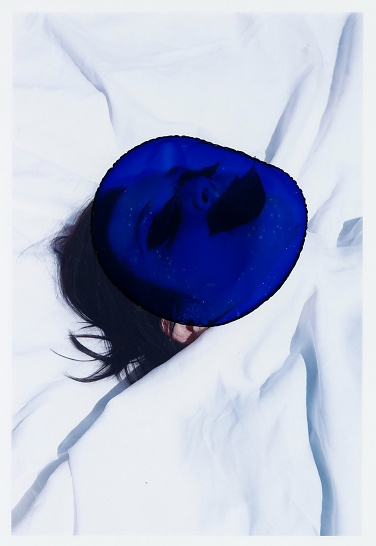
Sassen’s work has previously been shown in the main exhibition of the Venice Biennale (2013), at the MoMA in New York, The Photographers’ Gallery in London, the Museum of Contemporary Photography in Chicago, The Central Academy of Fine Arts in Beijing, Fotografiska in Stockholm, the Scottish National Portrait Gallery, Huis Marseille, the Nederlands Fotomuseum and Rencontres d’Arles. Her work is currently on show in a solo exhibition at Fotomuseum Winterthur in Switzerland (until 29 May).
During Art Rotterdam, Viviane Sassen’s work will be on display in the booth of STEVENSON.